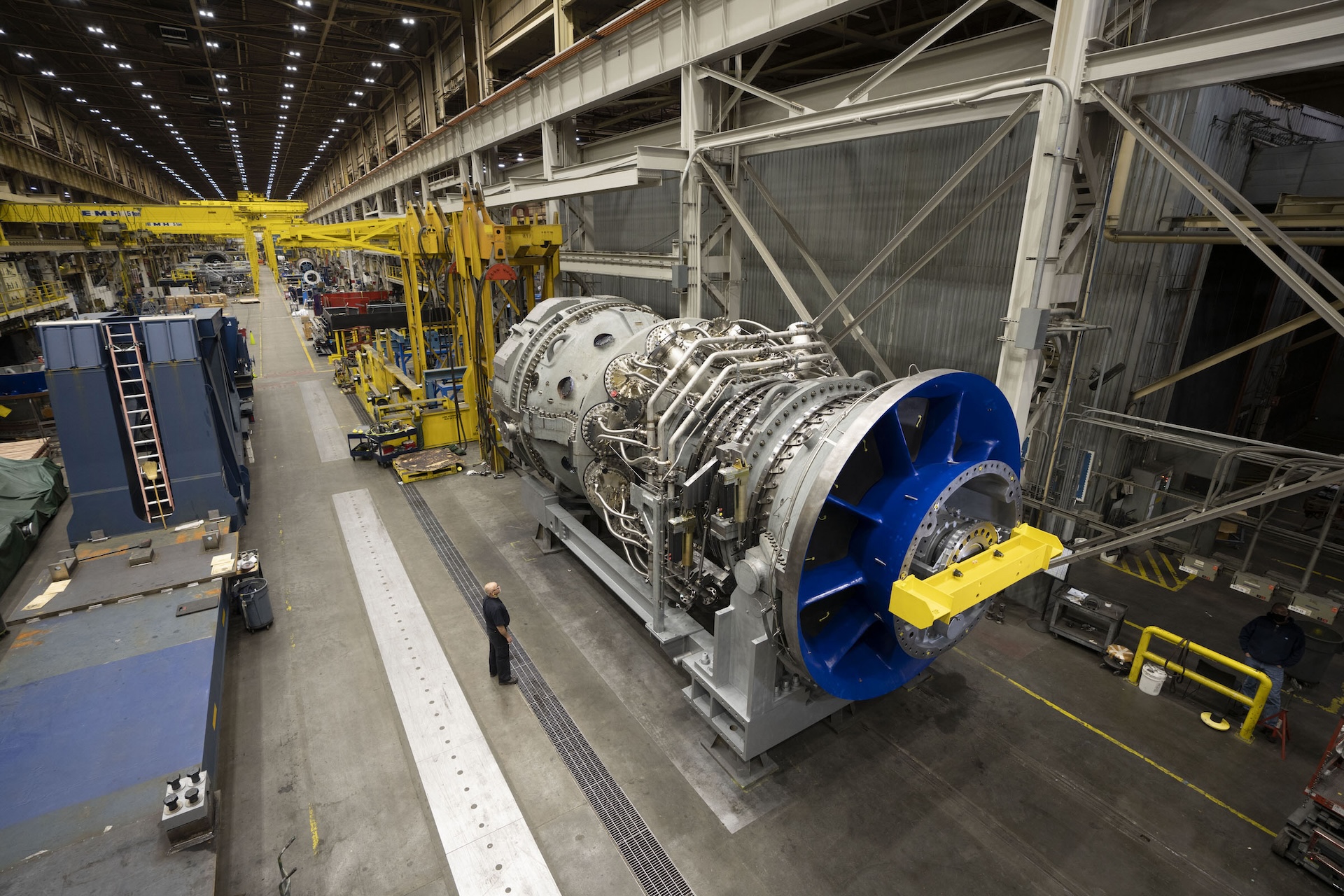Data centers, those serried racks of servers, storage devices, and network hardware that keep the internet humming, are dominating the conversation about future energy demand. In the United States alone, power demand from the sprawling buildings could almost double to 80 gigawatts (GW) by 2035, driven by the explosion in artificial intelligence–driven search activity. That’s equivalent to the average demand of a major European economy like France’s or Germany’s.
As U.S. policymakers and generators prepare for the surge from the digital realm, they can’t neglect “traditional” sources of demand in the physical world. By 2035, the country’s residential, commercial, and industrial sectors will still account for around 80% of power demand. And, like data centers, the country’s tens of millions of homes, stores, and factories will rely on affordable, reliable, and flexible electricity 24 hours per day, seven days per week, 365 days per year.
Georgia-based generation cooperative Oglethorpe Power has always prioritized the needs of its member-owners — 38 not-for-profit distribution cooperatives that serve 4.7 million of the state’s 11 million residents. For decades, Oglethorpe has utilized its diverse portfolio of generation assets to steadily generate millions of megawatt-hours of reliable, efficient, and affordable power for the Peach State’s rural communities. As Georgia’s rural economy grows, Oglethorpe is rising to the challenge to meet its members’ increasing electricity demands. It has just chosen GE Vernova’s combined cycle gas power technology to be a linchpin of its long-term supply strategy for the thriving southeastern state.

For Oglethorpe’s new gas power plant in Monroe County, in central Georgia, GE Vernova will supply the entire power island — comprising two highly efficient 7HA.03 gas turbines, each paired with an H84 hydrogen-cooled generator, two D600 steam turbines each paired with an H65 hydrogen-cooled generator, and heat recovery steam generators (HRSGs). With the Monroe County plant startup expected in 2029, the plant looks to generate more than 1,400 megawatts of reliable power for Oglethorpe’s members, which serve rural and suburban parts of the state.
As well as shoring up the state’s long-term energy security, once online, the new Monroe County facility is expected to be among the highest-performing, lowest-emitting, and most efficient gas power plants in Georgia, explains Heather Teilhet, Oglethorpe’s executive vice president of external affairs. “Gas is already one of the most important fuel resources in our portfolio, and our gas-fired capacity continues to grow,” she says. “In today’s globally competitive industry, securing this advanced technology means we can keep doing what we do best: generating safe, reliable, and affordable power for our members and the 4.7 million Georgians they serve.”
Rural Boom
In the 1930s, rural electric cooperatives were formed after President Franklin D. Roosevelt established the Rural Electrification Administration, a program designed to bring electric power to rural communities. For decades, Georgia’s electric cooperatives purchased wholesale power from companies that owned generation assets.
In 1973, amid an oil embargo in the Middle East that caused dramatic increases in crude oil prices, fuel shortages, and economic turbulence, Georgia’s rural electric cooperatives decided it was time to control their own generation and grid assets.
They moved fast, and by 1974 Georgia’s grassroots, not-for-profit electric cooperatives had rallied together to form Oglethorpe Power. Fast-forward to today: Oglethorpe ranks among the top power producers in the U.S. and is the largest electric cooperative in the country based on energy generated. The company generates wholesale power from its diverse 9.3-GW fleet for its member cooperatives who deliver reliable electricity to rural and suburban communities across Georgia.

In keeping with Georgia’s “all of the above” approach for the state’s electricity supply, Oglethorpe’s member cooperatives can call on a broad range of nuclear, gas, hydropower, coal, and renewable power facilities. It’s an approach that has helped to deliver some of the nation’s lowest residential electricity rates. Teilhet points out that in 2024, more than three in four Americans resided in states where residential electricity rates are higher than they are in Georgia.
Affordable power is a major factor in Georgia’s successful economic development strategy. Propelled by major investments from large technology companies, Atlanta, the state capital, is emerging as a data center hot spot. But the state’s rural areas are also experiencing growth, thanks to the state’s sound leadership, pro-business climate, robust regulatory framework, and workforce development initiatives, says Teilhet. According to the Georgia Department of Economic Development, in fiscal year 2024, 83% of new businesses and business expansions were located outside of the 10-county Atlanta metro area. The same rural areas scooped nearly 62% of the $20.3 billion of new investment in the state in the same fiscal year.
Reliable Energy, More Sustainable Growth
And Oglethorpe is bidding to support them all the way. While households consume around 60% of the utility’s generation, the residential sector makes up about 90% of its member cooperatives’ accounts. “Our members in rural Georgia serve a mix of residential, small and large commercial and industrial and agricultural loads,” says Teilhet. “In some cases, a large farm operation with pivot irrigation is the largest energy consumer in the community.”
Gas power generation can be a staunch ally and flexible resource for the fast-growing rural communities. The new Monroe County combined cycle plant aims to allow Oglethorpe to pack extra punch when required. “We’ve strategically included a lot of duct firing,” says Eric Rasmussen, senior vice president of capital projects and technical services at Oglethorpe, referring to the Monroe plant’s ability to burn extra fuel in its HRSG exhaust duct, thereby boosting total power output. It’s like the afterburners on jet aircraft, the components in the engine exhaust system that deliver extra thrust. “The new Monroe County plant is expected to have the best heat rate efficiency in our natural gas fleet.”
And GE Vernova’s 7HA.03 gas turbines, which are manufactured in the neighboring state of South Carolina, are the perfect complement for Oglethorpe’s members’ growing renewable portfolio, explains Rasmussen. “They’ve got a low load turndown, which helps us to balance the variability of solar in Georgia,” he says, referring to the ability of the turbine to operate efficiently at low output. During cloudy periods, the 7HA.03 can regulate capacity, neatly patching the shortfall in solar generation. “We want to have the ability to run at very low rates and meet our members’ demand reliably while operating with best-in-class environmental controls,” he adds.
The entire power island at the Monroe County plant will sport the GE Vernova brand, rather than being a patchwork of different equipment manufacturers. Rasmussen believes that a single line of communication will help to simplify operations.
As if targeting more than 1,400 megawatts of reliable, affordable, and flexible power weren’t enough, the Monroe County plant can also be a boon for the local economy, providing around 1,200 temporary construction jobs, which can also increase demand at local businesses, shops, and restaurants. Once online, the plant is expected to provide about 25 permanent, highly skilled jobs for operations, maintenance, and administration. Over the longer term, the plant can generate significant new ongoing property and sales tax revenue that will support local schools and county operations, explains Teilhet.
“GE Vernova’s HA gas turbine fleet is among the most responsive and flexible in the industry,” says Dave Ross, the chief executive of GE Vernova’s Gas Power Americas region. “We’re proud to support Oglethorpe Power and its members in meeting the state’s growing energy demands by delivering equipment able to produce reliable electricity powered by our cutting-edge and highly efficient technology,” he adds.
The Monroe County combined cycle collaboration builds on a long-standing history of cooperation between GE Vernova and Oglethorpe, says Rasmussen. “There are limited OEMs out there” — that is, original equipment manufacturers — “that can do this type of complex work and have a proven track record doing it, like GE Vernova. We’re happy to have the strong relationships in this space that we need to sustain our members’ growth and meet demand reliably.”
